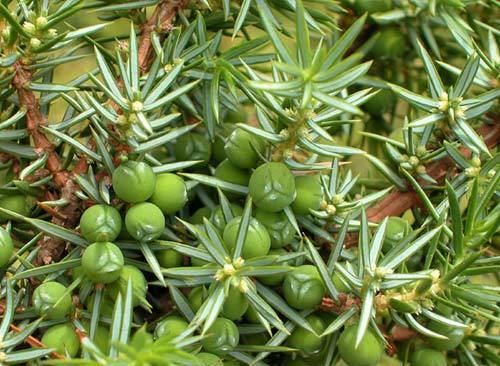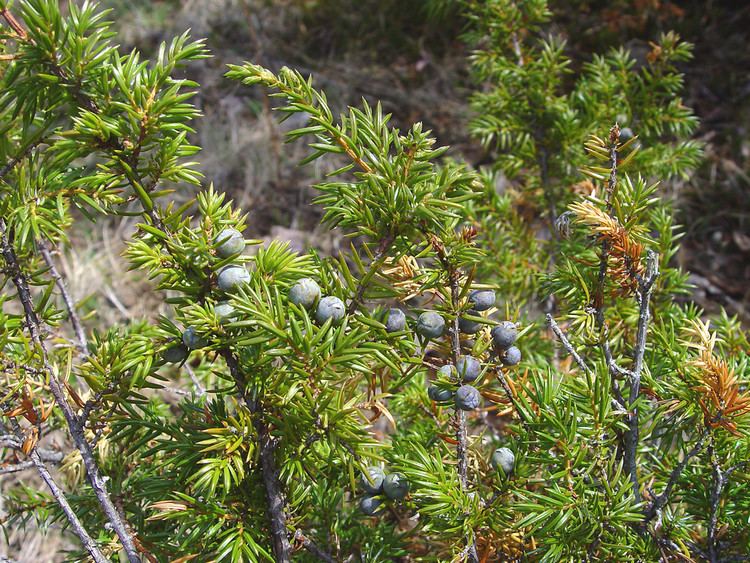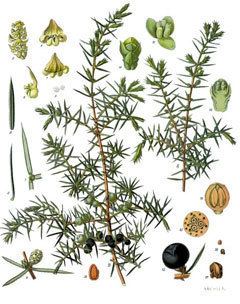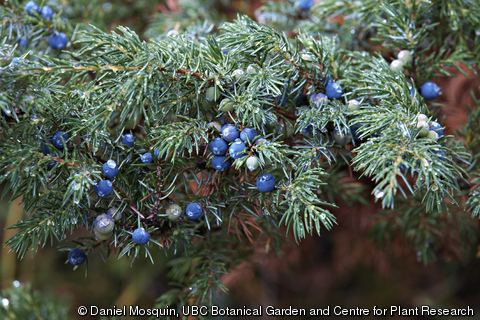Higher classification Juniper | Division Pinophyta Scientific name Juniperus communis Rank Species | |
 | ||
Similar Juniper, Scots pine, Conifers, Cypress, Juniperus sabina | ||
Juniperus communis subsp alpina alpine juniper bonsai
Juniperus communis, the common juniper, is a species of conifer in the genus Juniperus, in the family Cupressaceae. It has the largest geographical range of any woody plant, with a circumpolar distribution throughout the cool temperate Northern Hemisphere from the Arctic south in mountains to around 30°N latitude in North America, Europe and Asia. Relict populations can be found in the Atlas Mountains of Africa.
Contents
- Juniperus communis subsp alpina alpine juniper bonsai
- Description
- Subspecies
- Cultivation
- Crafts
- Culinary
- Traditional medicine
- References

Description

Juniperus communis is a small coniferous evergreen tree or shrub, very variable in form, ranging from 10 m (33 ft)—rarely 16 m (52 ft)—tall to a low, often prostrate spreading shrub in exposed locations. It has needle-like leaves in whorls of three; the leaves are green, with a single white stomatal band on the inner surface. It never attains adult foliage. It is dioecious, with male and female cones, which are wind pollinated, on separate plants.

The fruit are berry-like cones, initially green, ripening in 18 months to purple-black with a blue waxy coating; they are spherical, 4–12 mm (0.16–0.47 in) diameter, and usually have three (occasionally six) fleshy fused scales, each scale with a single seed. The seeds are dispersed when birds eat the cones, digesting the fleshy scales and passing the hard, unwinged seeds in their droppings. The male cones are yellow, 2–3 mm (0.079–0.118 in) long, and fall soon after shedding their pollen in March–April.
Subspecies

As to be expected from the wide range, J. communis is very variable, with several infraspecific taxa; delimitation between the taxa is still uncertain, with genetic data not matching morphological data well.
Some botanists treat subsp. alpina at the lower rank of variety, in which case the correct name is Juniperus communis var. saxatilis Pallas, though the name Juniperus communis var. montana is also occasionally cited; others, primarily in eastern Europe and Russia, sometimes treat it as a distinct species J. sibirica Burgsd. (syn. J. nana Willd., J. alpina S.F.Gray).
Juniperus communis is one of Ireland's longest established plants.
Cultivation
Juniperus communis is cultivated in the horticulture trade and used as an evergreen ornamental shrub in gardens. The following cultivars gained the Royal Horticultural Society's Award of Garden Merit in 1993:
Crafts
It is too small to have any general lumber usage. In Scandinavia, however, juniper wood is used for making containers for storing small quantities of dairy products such as butter and cheese, and also for making wooden butter knives. It was also frequently used for trenails in wooden shipbuilding by shipwrights for its tough properties.
In Estonia juniper wood is valued for its long lasting and pleasant aroma, very decorative natural structure of wood (growth rings) as well as good physical properties of wood due to slow growth rate of juniper and resulting dense and strong wood. Various decorative items (often eating utensils) are common in most Estonian handicraft shops and households.
According to the old tradition, on Easter Monday Kashubian (Northern Poland) boys chase girls whipping their legs gently with juniper twigs. This is to bring good fortune in love to the chased girls.
Culinary
Its astringent blue-black seed cones, commonly known as "juniper berries", are too bitter to eat raw and are usually sold dried and used to flavour meats, sauces, and stuffings. They are generally crushed before use to release their flavour. Since juniper berries have a strong taste, they should be used sparingly. They are generally used to enhance meat with a strong flavour, such as game, including game birds, or tongue.
The cones are used to flavour certain beers and gin (the word "gin" derives from an Old French word meaning "juniper"). In Finland, juniper is used as a key ingredient in making sahti, a traditional Finnish ale. Also the Slovak alcoholic beverage Borovička and Dutch Genever are flavoured with juniper berry or its extract.
Juniper is used in the traditional farmhouse ales of Norway, Sweden, Finland, Estonia, and Latvia. In Norway, the beer is brewed with juniper infusion instead of water, while in the other countries the juniper twigs are mainly used in the mash, as filters to prevent the crushed malts from clogging the outlet of the mashing tun.
Traditional medicine
Juniper berries have long been used as medicine by many cultures including the Navajo people. Western American tribes combined the berries of Juniperus communis with Berberis root bark in a herbal tea. Native Americans also used juniper berries as a female contraceptive.
